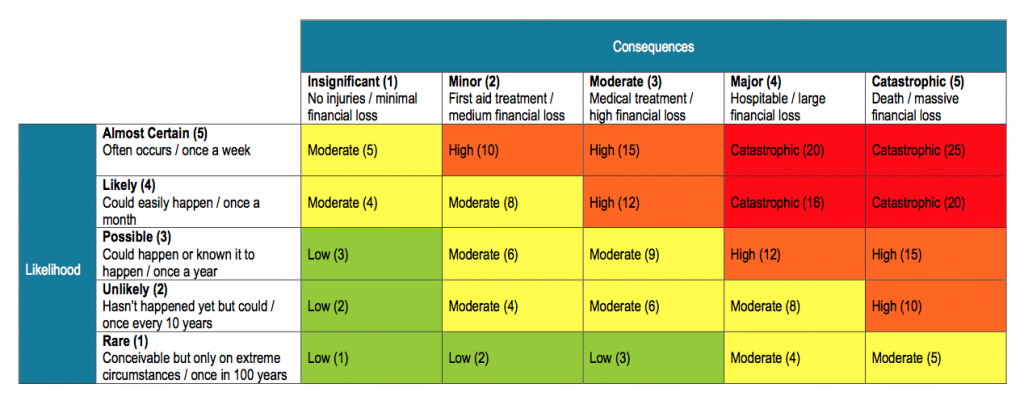How a Simple Process Drives Safety Compliance
Safety management systems have come a long way in the last 250 years. Just think back to workplace conditions during the Industrial Revolution – almost no pay, child labour, very long hours, and extremely dangerous work conditions with exposure to chemicals, accident-prone machinery, and no WHS requirements whatsoever.
But this has changed over the years. Legal reforms and acts were introduced – the Factory Act, the Employer’s Liability Act, and finally, the 1974 Health and Safety at Work Act. This legal document became the foundation for workplace health and safety processes in the UK and the rest of the world. And it led to the increasingly more complex safety processes we have today.
The core purpose of WHS is to keep people safe. Simple. With the increasing complexity of requirements and standards, Business owners, project managers and safety officers alike have to be careful of falling into the trap of using compliance to document requirements like the SWMS as their main measure of WHS compliance. This article looks at why adhering to document requirements is a poor standalone indicator of compliance. We also suggest how a simple safety process drives the success of your WHS compliance.
Documents are Symbols of a Process
Safety isn’t symbolic. It is real and should be treated in the real world, not on a document. Safety management systems do involve documents, but they symbolise a process. For example, a SWMS is a safety planning tool that identifies the risks of high risk construction work and the actions taken to manage those risks. It symbolises the process you are going to take when dealing with the risks and making sure your workplace and its workers are safe from those risks. When it’s under the (judges) hammer, the process symbolised (documented) matters most – not the symbol or the document itself.
Downloading a generic template for your SWMS, JSA, or any other safety document is like taking the symbol without taking the process it represents. And that defeats the whole point of your safety management system and its documents. To comply with WHS requirements, you should be focusing on the processes required to keep your workplace and its workers safe – not just on the documents themselves.
WHS audits look at whether you have followed an effective process that actively reduces the risks in your workplace. They care about if you have actually provided a safe work environment. Not simply whether you have ticked the box of completing a piece of paperwork.
In 2013, The Supreme Court Qld in a case against a QLD construction company for the death of two workers cited:
“work practices focused too much on the work performed onsite and did not pay adequate attention to the dangers presented by the conditions of the site itself”
In other words, not considering risks on the ground, in the real world can have significant impacts when taken to the extremes. Focussing too hard on the details of the tasks to be completed can lead to ignoring all the risks that are actively present
What you focus on matters. And if you want to pass your WHS audit and actually keep your workers safe, then it’s time to focus on the safety management process behind the symbols and documents.
But I still go through a process when filling in a template?
Safety management systems aren’t just about the symbols. They’re about the processes behind them. But you may be wondering – isn’t downloading a generic template still technically a process? Sure. But think about this. What process is more effective at satisfying the Work Health and Safety Act requirement to provide a safe work environment? Is it:
- Find a generic SWMS template on Google, Officeworks or other source
- Complete the boxes provided by the template as best as you can
- Gather up or seek out workers individually and gather signatures
- Store it onsite until the work is done
- Transferring the document to a folder in your office when you are done with the site
Or:
- Identify a the risks onsite, in person
- Build a new SWMS or modify the existing version to cover all task & site-specific risks that are present. Pushed to everyone to sign.
- Monitor how measures are being implemented while work is being completed with real time automated risk rating notifications
- Review by anyone relevant once the work has been completed
- Automatic document storage once complete for any future audits, follow-ups, or learning
From a legal standpoint, the second option is better,
The very purpose of developing a SWMS is to ensure that employers and workers have taken the time to identify the high-risk tasks to be done on site. And then, it is to develop measures to manage these risks and tasks in the context of the work being done. The very nature of a SWMS is that it is specific. It is created specifically in response to a specific site, specific tasks, and specific risks. A generic templated SWMS will not meet the intention behind WHS requirements. Instead, it will defeat the real power of the SWMS and even take away from your safety management.
As WorkSafe Victoria explains, “our concern is not what is written but what actually happens”. A generic SWMS is a symbol of safety that only provides guidance. To focus on the process and comply with WHS requirements, your SWMS and other safety documents need to be customised. It is the second process that is more likely to pass a WHS audit because it demonstrates an active approach to creating a safe work environment. And it is the first process that will get a much more severe punishment when a safety incident does happen, even though both processes are represented by the same type of document.
How to Prioritize the Process
The simplest way to boost the effectiveness of your safety process is to use a digital safety platform like SafeWorkPro. While you can do your safety management physically or digitally, doing it digitally is what will make the difference. Why?
Safety management software simplifies your safety management. Turning a complex process into a simple, easy to understand workflow that allows for an easier way to assess, mitigate, monitor and review workplace risks of all nature. It makes sure that your safety management system is customised, comprehensive, and lets you focus on the process. Leave the document creation, distribution and storage to the software. With safety management software, you can seamlessly customise, prioritise, and ensure your safety management system and its processes exceed WHS regulations.
SafeWorkPro is the Australian safety management software that can make sure your workplace prioritises the process over the symbols.
- Customise your SWMS, JSA, or other safety documents specifically to your worksite using our flexible document builder
- Make sure your specific workplace risks are managed and your workers are safe
- Ensure your company truly complies with WHS requirements
Do all of this seamlessly and in one place with the SafeWorkPro platform. Click the button below to find out more.
More From The SafeWorkPro Blog
Risk Reporting: what is a dangerous incident?
This is one of the many risk assessment questions that construction businesses ask but the answer is not as straightforward as you would assume. ‘Dangerous incident’ is a term that comes with certain responsibilities under OHS laws and has immediate effects on potentially any workplace risk assessment.

A dangerous incident can be classified as a workplace event that exposes any worker, manager or other person to a serious health or safety risk. There are numerous generic hazards and health risks at work that are identified under the Work Health and Safety Act 2011. These include:
- The breakdown or partial breakdown of a structure
- The breakdown or collapse of a shoring supporting an excavation/tunnel
- The failure, breakdown, damage or collapse of a plant required to be authorised under risk assessment regulations
- The inundation of mud, water or gas into an underground excavation/tunnel
- The failure of a ventilation system in an underground excavation/tunnel
- The fall from a height (at least 2-3 metres) of any substance, plant or object
- The unrestricted release of gas, steam or a pressurised material
- An explosion, implosion or fire
- The unrestricted release, spillage or leak of a substance (see hazardous substance risk assessment)
- An electrical shock not classified as a serious electrical incident or a dangerous electrical event*
As soon as a person conducting a business or undertaking (PCBU) becomes aware of a dangerous incident then they are required to immediately notify the relevant workplace health and safety regulator. For a list of the various regulators for each Australian jurisdiction, check Safe Work Australia.
*Note: in Queensland, a serious electrical incident or a dangerous electrical event has a different notification process under the Electrical Safety Regulation 2013.
Compliance Risk Assessment Matrix
When it comes down to it, the risk assessment matrix is just part of the broader risk assessment process that aims to make your workplace compliant with OHS legislation Australia. So to say there is a Workcover Risk Assessment Matrix would be inaccurate.
But health risks at work are a common part of any job and ensuring the health and safety risk assessment matrix is both properly completed and totally understood is a fundamental part of remaining compliant. To explain risk assessment properly we must also explain the compliance risk assessment matrix.
A matrix in this context works as a risk assessment scale of sorts. It gives the likelihood of a risk occurring and the severity of that risk’s consequence a numerical value. These two numbers are multiplied and the total number equates to level of risk a job is likely to involve (see table below). It is a flawed risk assessment method because it cannot deal with every possible scenario and its categorisations are ambiguous at best. Nonetheless the risk assessment matrix remains the main way to discern risk in a numerical form across Australia.

Safety Compliance Software: Taking the risk out of Risk Assessment
What is compliance?
Compliance basically means that you are playing by the rules, and in the game of safety and productivity, the Work Health and Safety Act (WHS) is top dog. The WHS Act states that the person conducting a business or undertaking (PCBU) is responsible for the health and safety risk assessment form of every worker. A failure to meet these requirements will result in sub-standard risk assessment scoring and possible penalties or fines from the relevant regulator. In the past, the completion and storage of paperwork was the most efficient method of compliance but today there are alternatives in risk assessment software.
What is a Risk in Health and Safety?
High risk construction work is generally considered to be any form of work that has the potential to cause injury or death. Safe Work Australia has identified a variety of high risk work and various codes of practice for each type.
How to Perform a Risk Assessment?
The traditional workplace risk assessment form is made up of multiple layers of paperwork including safe work method statements (SWMS), a health and safety risk assessment matrix and job safety analysis (plus more depending on the type of work). This process is time consuming, expensive, stressful and obsolete. However at SafeWorkPro we’ve developed safety compliance software that provides a digital alternative to the hassle of paperwork. SafeWorkPro is a risk analysis tool that combines all these various risk assessment forms into one easy to use app available on any smart phone or tablet device.
Compliance is necessary according to OHS legislation Australia, but with safety compliance software, it doesn’t have to cost your business so much time or money.




